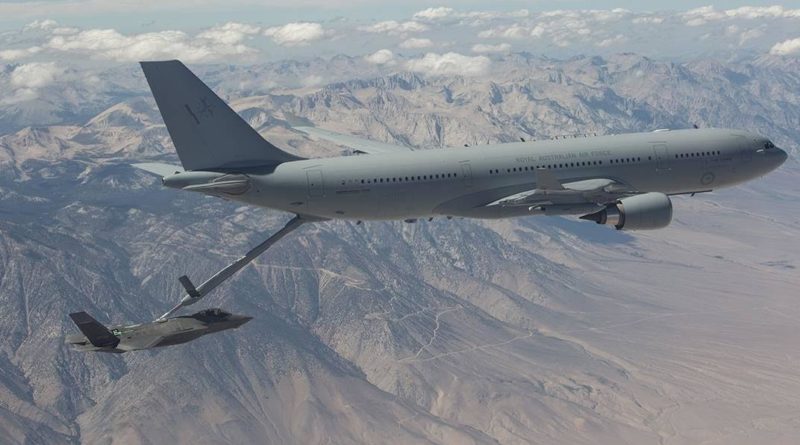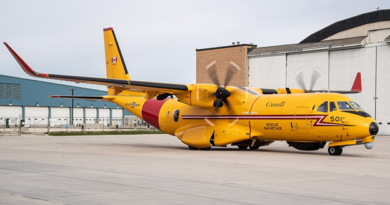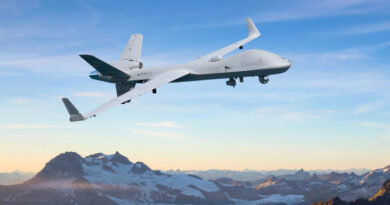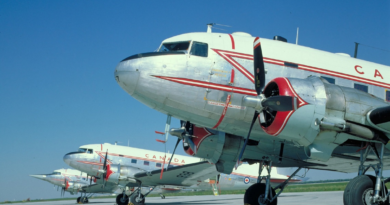Refuelling RCAF Aircraft Post-2020
For the past several years, the topic of a CF-188 Hornet fighter fleet replacement has been the bane of both the previous Conservative government and the current Trudeau administration. Since the replacement requirement was first identified, political haggling has not produced any progress on this important file. From an initial Conservative requirement to purchase 65 F-35 aircraft, to Prime Minister Trudeau’s declaration in 2015 that Canada would never purchase this aircraft, a request for proposal for a new fleet of fighters has been kicked down the road like the proverbial can. Is the government awaiting a new mandate before going to competition to avoid embarrassment, especially if the F-35 is proven to be the aircraft of choice? It certainly is with our NATO allies.
Years after the replacement requirement was identified, nothing has been done. The 2017 “capability gap” requiring an additional 18 aircraft turned out to be a false premise which quickly disappeared with the Boeing Super Hornet and Bombardier C-series aircraft debacle. There is no capability gap but now due to the age of the RCAF Hornets, we will purchase 25 used Australian Hornets to keep ours flying until 2030 when the age of our front line fighter will be 50+ years old. This purchase is of course subject to US approval and we know what that atmosphere is like.
Now what has this to do with the air-to-air refuelling problem? Several facts should be stated.
The current fleet of two CC-130H Hercules refuellers and two CC-150 Airbus Polaris aircraft are reaching the end of their service lives. The Hercules aircraft will be retired in 2020 and no replacement has been announced. The vital point here is that it is the only aircraft in the inventory which can refuel the CH-47F Chinooks (this is due to the low speed of the helicopters compared to jet aircraft). Without knowing the type of new fighter we will purchase, planners cannot easily identify a new air refuelling tanker aircraft because the type of AAR (air-to-air refuelling) system, probe and drogue or boom connection must be known.
There is no easy answer. The USAF is phasing out its KC-135 aircraft and replacing the fleet with the KC-46 (Boeing 767 derivative). This old airframe will not meet our future needs as we also need a strategic airlift capability embedded in the aircraft. The Airbus 330 currently in production does in fact meet the need as it has both AAR systems, can be used as a strategic airlifter and with the partnership announced between Airbus and Bombardier, would be a good fit and a bonus to us. However, the Airbus 330 to my knowledge cannot refuel helicopters. This problem will have to be addressed as well. My solution – drop the requirement to air refuel our Chinooks or other future helicopters.
So what do the RCAF planners in Ottawa do? The need for a new AAR aircraft has yet to be identified as does the selection of an aircraft to replace the CC-150 Polaris which is now 30 years old. The in-production Airbus 330 meets all the needs for strategic airlift and has AAR versions flying now. This takes care of any future fighter identified as the new selection for the RCAF as well as the airlift part of the equation. The dangling question is: do we go to two fleets of aircraft or abandon AAR for the helicopters? As no funding has been identified for the latter requirement, if indeed it is one, let’s go with the Airbus 330, take care of a new strategic airlifter and have an AAR aircraft as part of the bargain.
A PDF of this Comments is available here.
The author is a RCAF veteran fighter pilot with 37 years of service in the RCAF and Canadian Armed Forces.
1 September 2018
Editor: a couple of remarks (reproduced below) were received to the above. In response the author of the article has provided some further words.
Remark 1: None of the RCAF’s CH-147Fs have an in-flight refuelling capability, so they have no influence at all on the selection of a new tanker aircraft. The only Chinooks with that capability are the special operations MH-47D, E, and G variants flown by the U.S. Army. Their standard Chinooks do not have it and neither do Canada’s.
Remark 2: The author surely knows that the A330 MRTT or the Boeing Pegasus can refuel via probe/drogue or flying boom. We don’t need to identify a fighter, either type can refuel it using NATO standard methods. To refuel CH-147, simply buy KC-130J.
Author: Perhaps the point of my article may have been missed on some readers. The aim of the article was to highlight the requirement to find a replacement for the five Royal Canadian Air Force (RCAF) CC150 Polaris transport aircraft of which two are strategic tankers equipped with a probe and drogue air-to-air refuelling (AAR) system.
The government and Department of National Defence will be actively seeking a replacement for these five aircraft as they are over 30 years old. In replacing these strategic airlifters, Canada will, of necessity, need to replace the strategic AAR role of the aircraft. This stated requirement is to support expeditionary fighter deployments outside Canada.
As an aside, tactical AAR is provided by five CC130H Hercules aircraft which are also due to be replaced around the 2020 timeframe. The point here is the fighter replacement program. Certainly we can outfit RCAF CC130J with a probe and drogue system as a replacement, but the only fighter in contention which uses this system is the F-18 Super Hornet which cannot be certain we will purchase. Other fighters in the running use the boom system so the Hercules would not be a suitable replacement, but this is another issue.
One other comment on the response to my article. I realize RCAF CH147F helicopters do not have the capability to air refuel, only the US aircraft do so let us set aside air refuelling of helicopters for the RCAF.
I omitted recommending the KC-46 Pegasus the USAF is purchasing due to the fact that the Bombardier/Airbus consortium would seem to be a better fit for Canada rather than the Boeing contender. Although beyond the intent of my original article, when we require strategic troop transport for UN or NATO rotations, we can certainly use RCAF CC117 Globemaster but I still contend, for total flexibility, that Canada needs to replace its CC150 Polaris with a long range, strategic airlifter and AAR capable aircraft. The aircraft which best meets a pure Canadian requirement is the Airbus 330.




